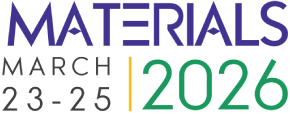Title : Evaluation of Polycaprolactone and Glycine electrospun Biocomposite as Scaffold for Tissue Construct Skin
Abstract:
Chronic wounds such as diabetic ulcers are injuries that do not repair properly, they usually occur in up to 25% of diabetic patients and their complications can cause amputations or death. An alternative to promote the repair of this type of wound is the application of tissue constructs obtained from electrospun scaffolds with biomaterials that, functionalized with Wharton’s jelly mesenchymal stromal cells (WJ-MSC), have a great potential for tissue repair.
In this work, polycaprolactone (PCL) and glycine scaffolds were fabricated using the electrospinning technique by changing the injected volume of the polymeric solution between 0.3ml and 0.5 ml, and adding 5% glycine, in order to evaluate how glycine and the deposition of a higher number of fibers affect the morphology, mechanical behavior of the scaffolds and cell viability.
Characterizations by FTIR, SEM, measurement of Young’s modulus and viability of WJ-MSC were performed to evaluate their potential use as a scaffold in a tissue construct. FTIR analysis showed that both materials are integrated into the obtained fibers. Likewise, the scaffolds with glycine had smaller fiber diameters and higher estimate porosity than those made only with PCL. The Young’s modulus of the scaffolds with glycine and lower injected volume shows that these scaffolds have a better elastic behavior suitable for skin applications. Regarding to the results of biological characterization, it was obtained that scaffolds with glycine support the viability of WJ-MSC.
The results shown that with the lower level of the injected volume and the addition of glycine to the scaffolds, the morphological and mechanical characteristics are improved for skin repair applications. This shows the potential of these scaffolds in the generation of tissue constructs.
Keywords: Electrospinning, biomaterials, polycaprolactone, glycine, Wharton's jelly mesenchymal stromal cells. Composites
What will audience learn from your presentation
• Electrospinning of Polycaprolactone and glycine scaffolds that seeks to be used in tissue constructs for skin repair.
• Evaluation of electrospun scaffolds by means of SEM, FTIR, Young’s modulus and cell viability.



